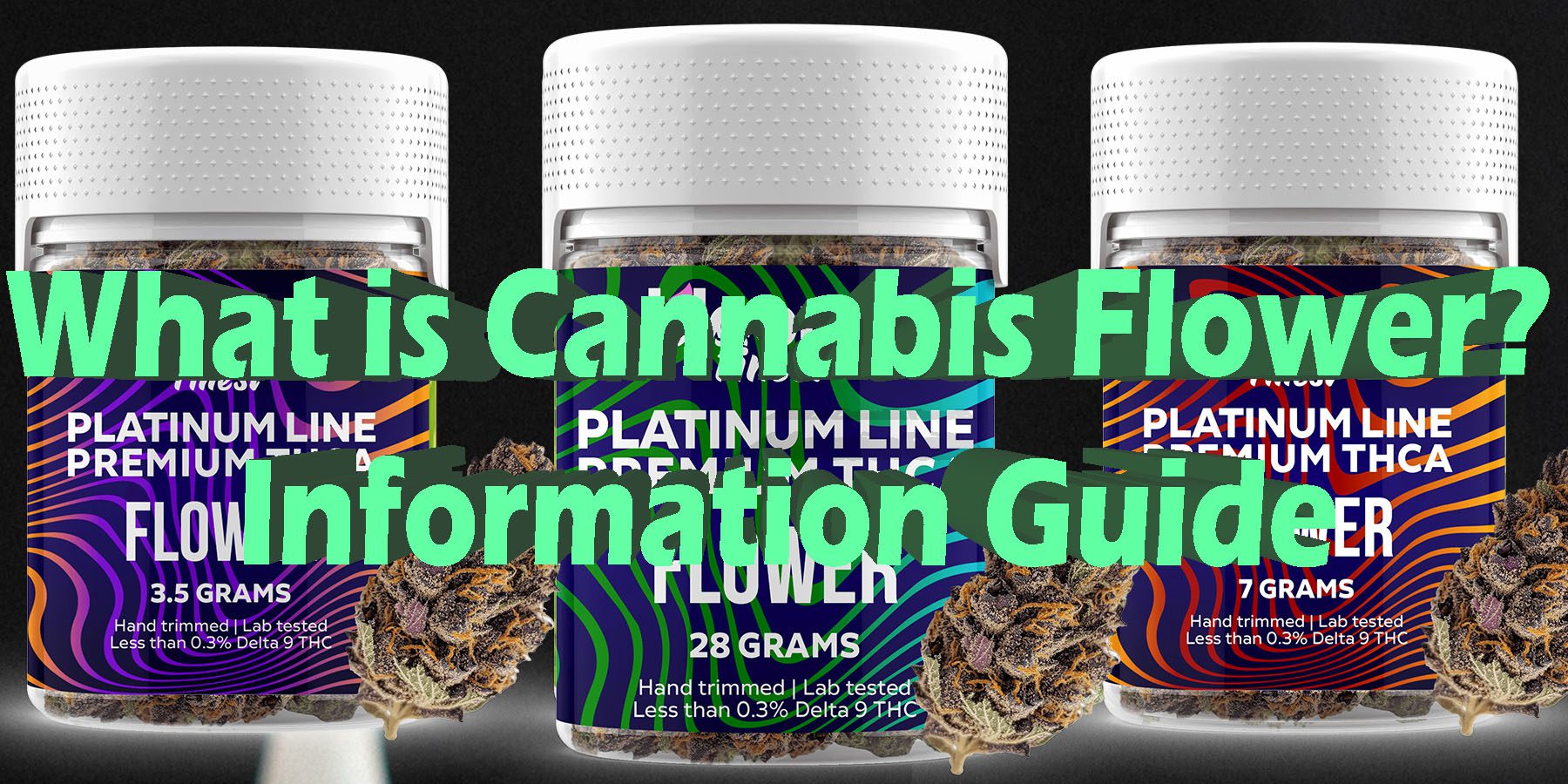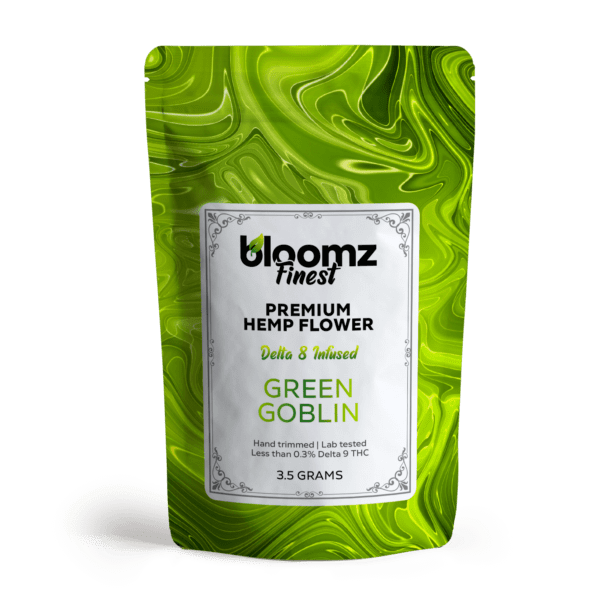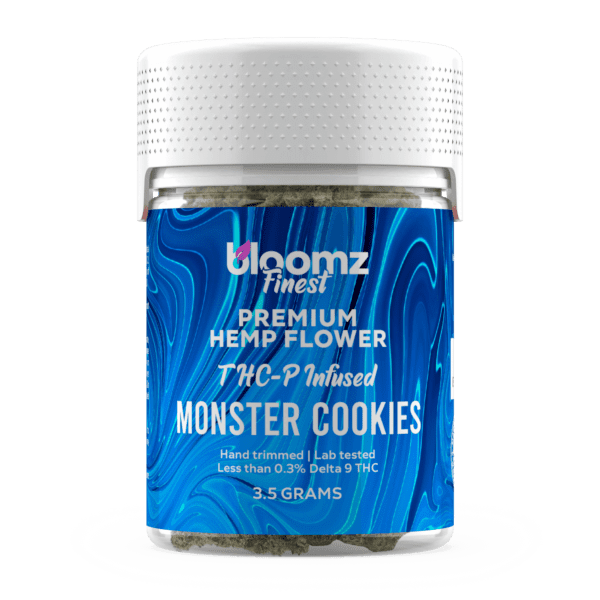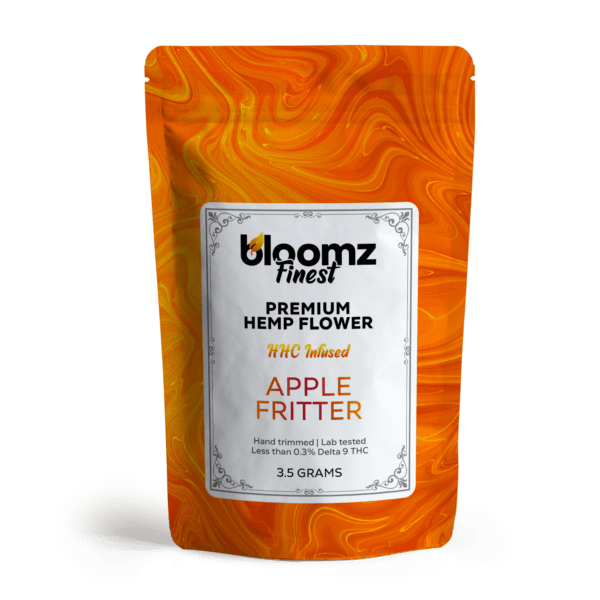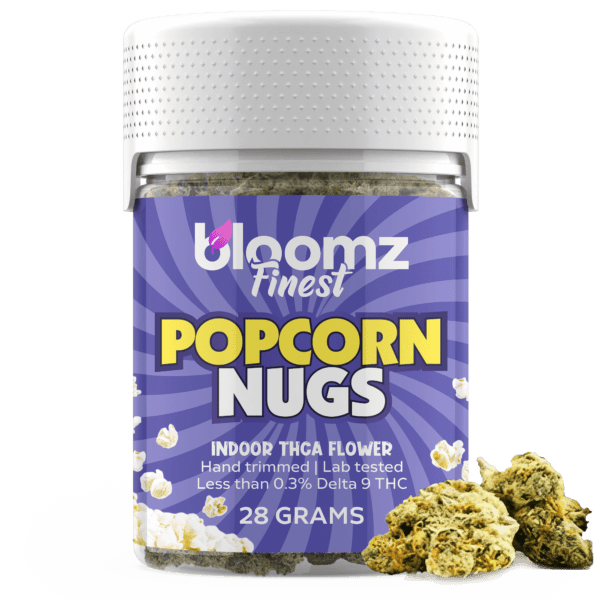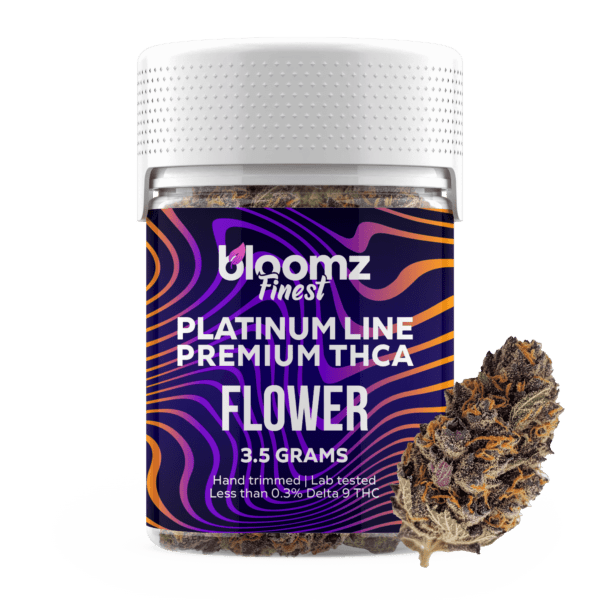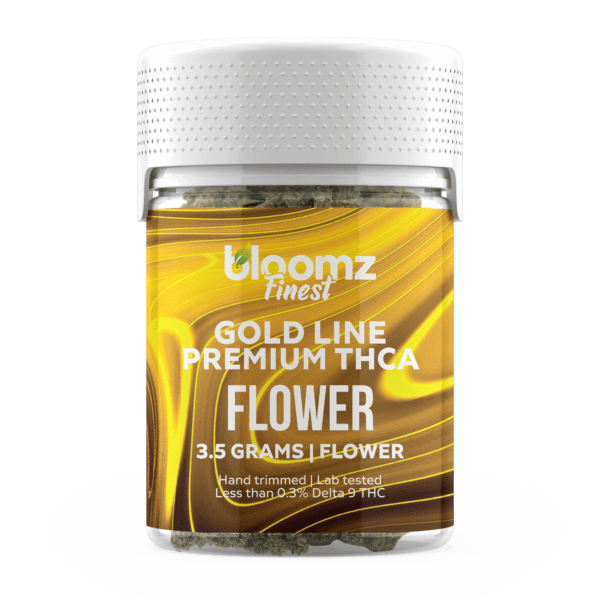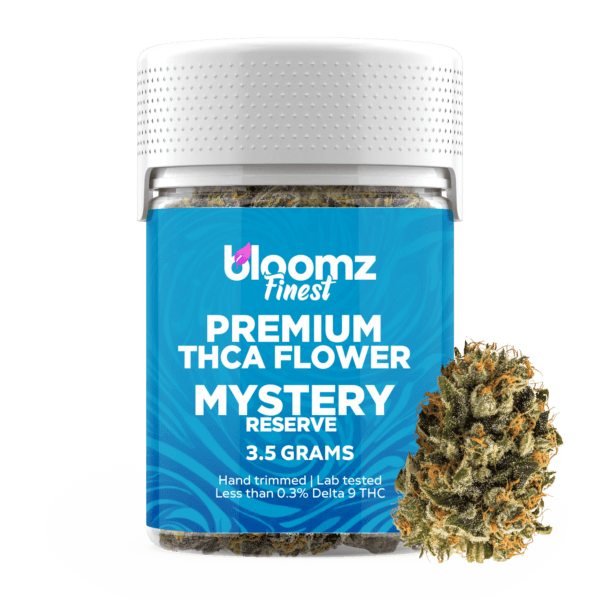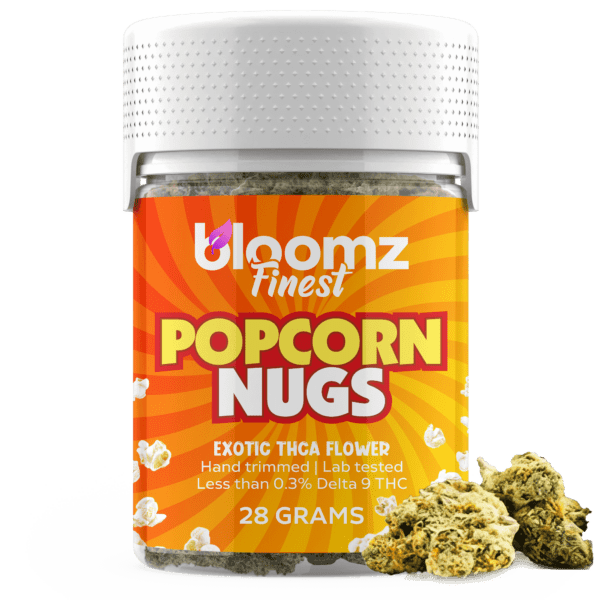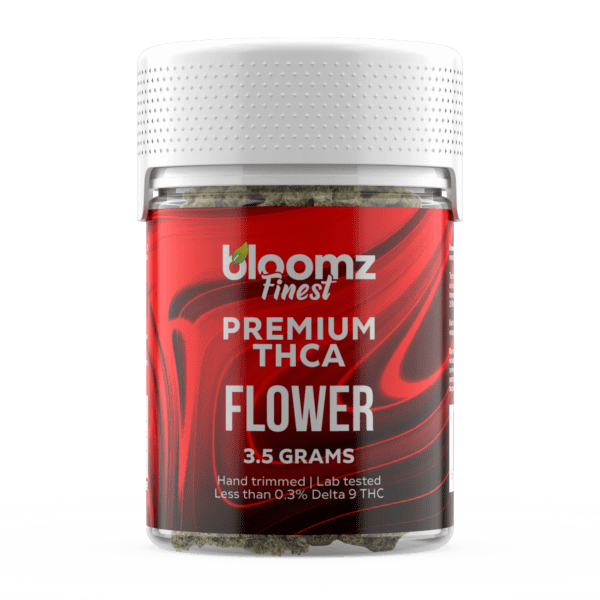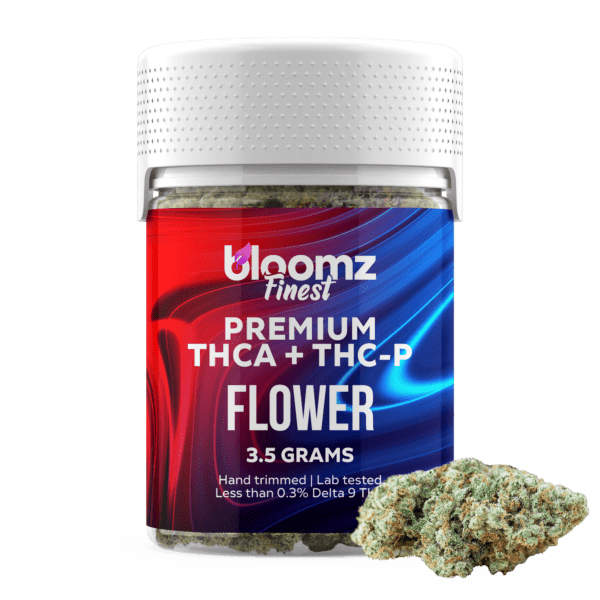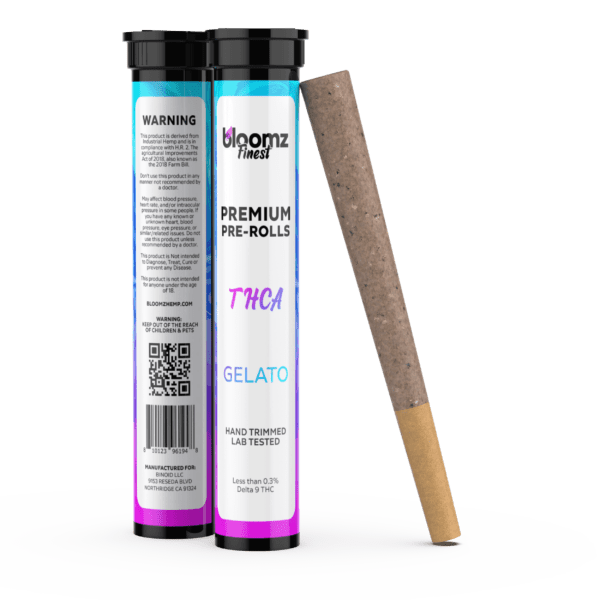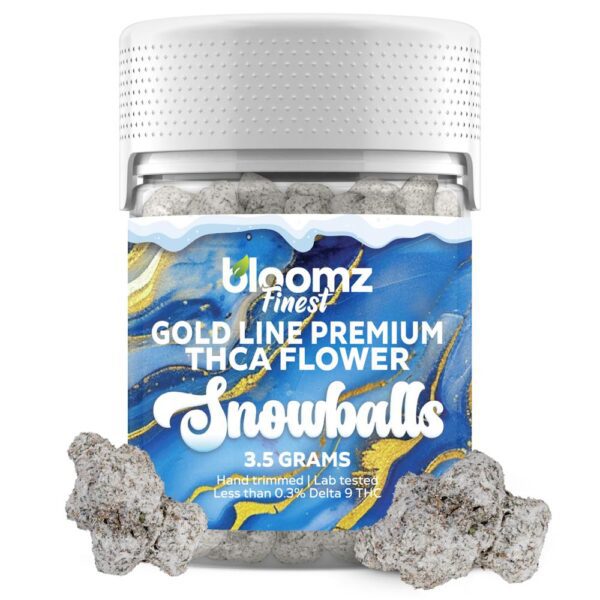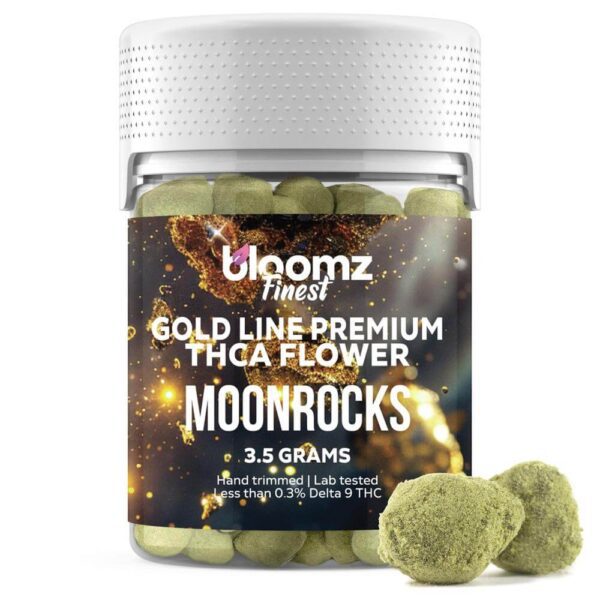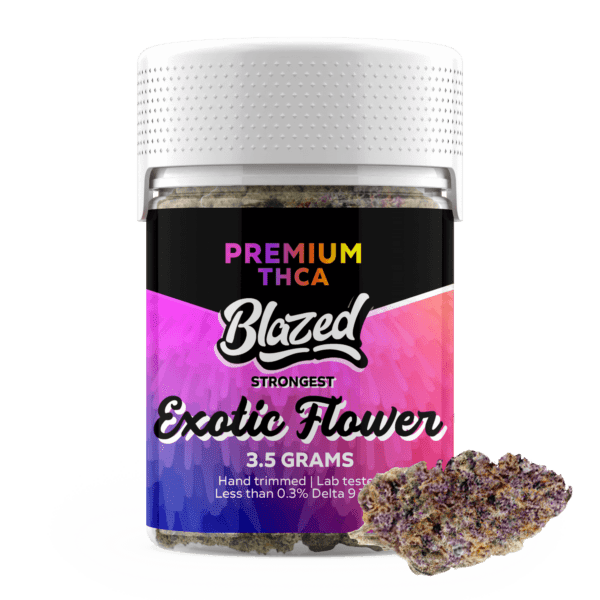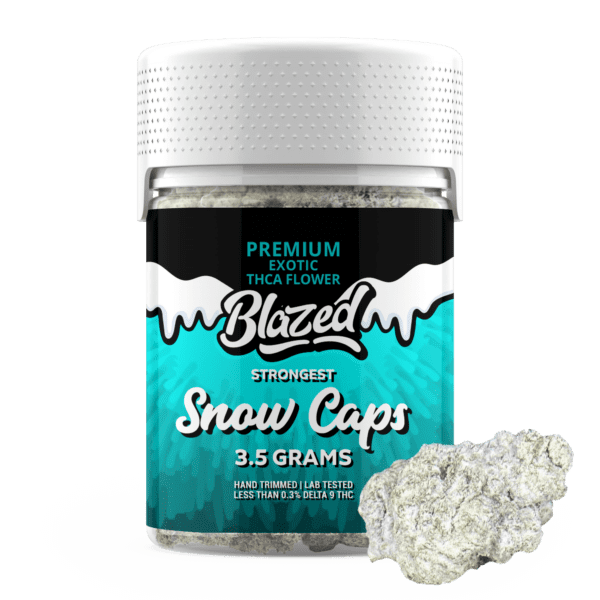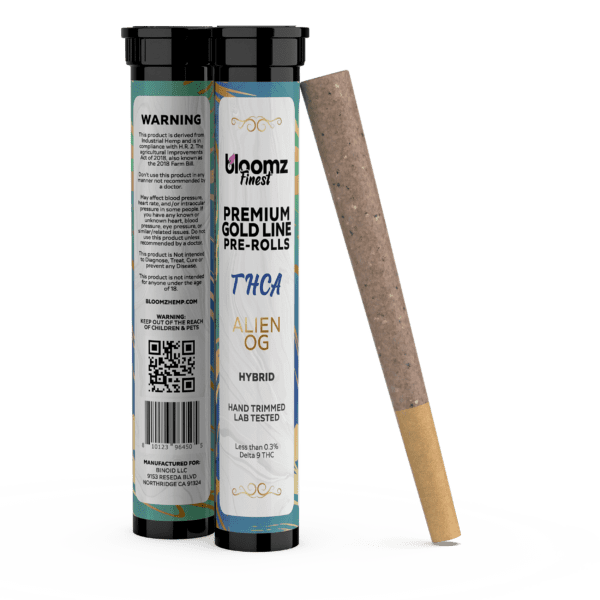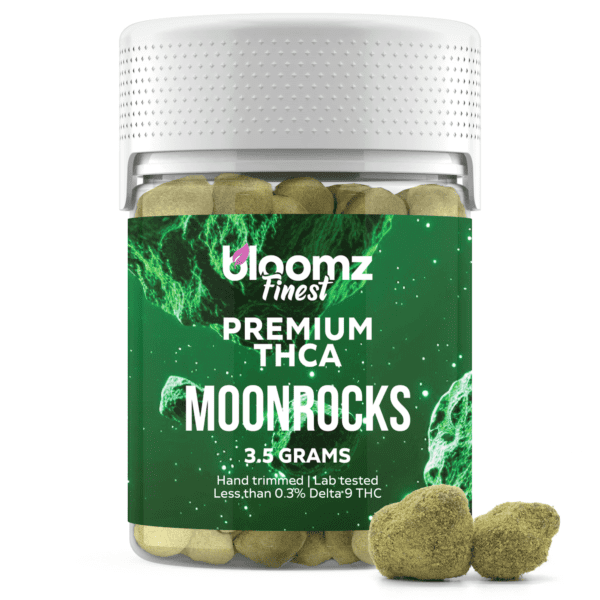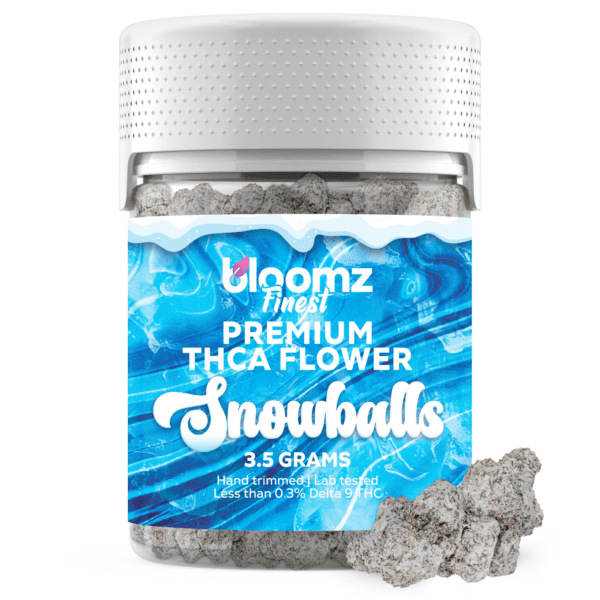The world of cannabis is vast and ever-expanding, a flourishing landscape of botanical wonders that has captivated human interest for millennia. At the very heart of this fascination lies the cannabis flower, a natural product with a rich history and a complex character. It represents the pinnacle of the plant’s life cycle, a testament to the intricate processes of cultivation and care that bring it into existence. For many, the first encounter with cannabis is through its flower, the most traditional and recognizable form of the plant. This initial introduction often sparks a deeper curiosity, a desire to understand not just its effects, but also its origins, its various forms, and the nuances that make each strain a unique experience.
The journey into the world of cannabis flower is one of discovery, revealing a remarkable interplay of science, nature, and human ingenuity. It’s a journey that uncovers the secrets held within the plant’s delicate trichomes and the stories woven into its genetic lineage. Understanding the cannabis flower is to appreciate a plant that has been both revered and misunderstood, a botanical that continues to shape cultures, conversations, and personal experiences around the globe.
To Buy Cannabis Flower Click Here
Recommended products
Your Insights into THC
Tetrahydrocannabinol, more commonly known as THC, stands as the most renowned and sought-after cannabinoid found within the cannabis plant. Delta 9 is the primary psychoactive component, the compound responsible for the euphoric and mind-altering effects that have come to define the cannabis experience for many. When individuals speak of the signature “high” associated with cannabis, they are, in essence, referring to the intricate dance that THC performs with the body’s endocannabinoid system (ECS). This complex network of receptors, located throughout the brain and body, plays a crucial role in regulating a variety of physiological processes. THC’s ability to bind to these receptors, particularly the CB1 receptors in the brain, is what unlocks its characteristic effects, leading to altered perceptions, a heightened sense of well-being, and a general feeling of relaxation. The potency of a cannabis flower is often measured by its THC content, with higher percentages typically indicating a more powerful and pronounced experience. However, the story of THC is not one of potency alone; it is a tale of a multifaceted compound with a profound influence on both the mind and body.
The history of THC is inextricably linked to the history of the cannabis plant itself, a relationship that spans thousands of years and traverses countless cultures. While the cannabis plant has been utilized for its fiber, seeds, and medicinal properties for millennia, the understanding of its psychoactive components is a more recent development. The isolation and synthesis of THC are credited to Israeli chemist Raphael Mechoulam and his team in 1964 – a groundbreaking achievement that revolutionized the scientific understanding of cannabis.
This discovery opened the door to a new era of research, allowing scientists to delve into the pharmacological mechanisms of THC and its effects on the human body. Prior to this, the psychoactive properties of cannabis were known and utilized, but the specific compound responsible remained a mystery. Ancient civilizations, from the Chinese to the Egyptians, documented the use of cannabis in various forms, often for spiritual or ceremonial purposes. The psychoactive effects were an integral part of these rituals, a means of achieving altered states of consciousness and connecting with the divine. The journey from ancient remedy to modern scientific inquiry has been a long and complex one, but it is a testament to the enduring fascination with this remarkable compound.
THC’s effects are as diverse as the individuals who consume it, a complex interplay of genetics, tolerance, and the specific strain of cannabis being used. The most commonly reported effects include a sense of euphoria, a feeling of blissful relaxation, and a heightened sensory perception. Colors may appear more vibrant, sounds more distinct, and flavors more pronounced. Time perception can also be altered, with moments seeming to stretch and contract in a fluid and unpredictable manner.
For many, this leads to a state of creative inspiration, a newfound ability to think outside the box and make novel connections between ideas. Others may find themselves in a more introspective state, a contemplative mood that allows for deep reflection and self-discovery. The physical effects can be equally varied, ranging from a feeling of lightness and ease to a more profound sense of bodily relaxation. It is this wide spectrum of effects that makes THC such a personal and subjective experience, one that is shaped by a multitude of factors, both internal and external.
The immense popularity of THC can be attributed to a confluence of factors, including its unique effects, its growing cultural acceptance, and its increasing accessibility. In a world that often feels fast-paced and demanding, the promise of a temporary escape, a moment of blissful reprieve, holds a powerful appeal. The ability of THC to induce a state of relaxation and euphoria has made it a popular choice for social gatherings, creative pursuits, and quiet moments of solitude. As societal attitudes towards cannabis continue to evolve, the stigma once associated with its use is gradually being replaced by a more nuanced and informed perspective.
This has led to a surge in interest from a wide range of individuals, from seasoned enthusiasts to curious newcomers. The proliferation of legal cannabis markets has also played a significant role in its rising popularity, providing consumers with safe and regulated access to a diverse array of THC-rich products. This newfound accessibility has not only made it easier for individuals to explore the world of cannabis but has also fostered a greater sense of community and shared experience among its users.
Recommended products
What is Cannabis Flower Then?
Cannabis flower, in its most fundamental sense, is the smokable, trichome-covered part of the female cannabis plant. These flowers, often referred to as buds or nugs, are the reproductive organs of the plant, and they are where the highest concentrations of cannabinoids and terpenes are found. It is within these delicate and crystalline structures that the magic of the cannabis plant truly resides. The cannabinoids, including the aforementioned THC, are the chemical compounds that interact with the body’s endocannabinoid system to produce a wide range of effects.
The terpenes, on the other hand, are the aromatic oils that give each cannabis strain its unique scent and flavor profile. From the earthy and piney notes of a classic OG Kush to the sweet and fruity aroma of a Tangie, the terpenes are responsible for the rich and diverse sensory experience of cannabis flower. It is the synergistic interplay between these cannabinoids and terpenes, often referred to as the “entourage effect,” that creates the unique and nuanced experience of each individual strain.
While both cannabis flower and hemp flower originate from the same plant species, Cannabis sativa, a crucial legal and chemical distinction separates them: their Delta-9 tetrahydrocannabinol (THC) content. According to federal law, hemp is legally defined as any cannabis plant that contains 0.3% or less Delta-9 THC on a dry weight basis. This negligible amount of the primary intoxicating cannabinoid means that traditional hemp flower will not produce the pronounced euphoric effects associated with its high-THC counterpart, which is often referred to as marijuana.
This fundamental difference in cultivation goals—prioritizing low Delta-9 THC in hemp versus high Delta-9 THC in cannabis—is the starting point for understanding their distinct places in the market. However, this single legal marker has given rise to an incredibly diverse and complex hemp flower industry that extends far beyond simple, non-intoxicating buds.
Initially, the hemp flower market was dominated by varieties rich in cannabidiol (CBD), but it is now a misconception to view all hemp flower as solely CBD-focused. The industry has expanded exponentially, with cultivators now breeding strains to be rich in a wide array of other cannabinoids. This includes minor non-intoxicating cannabinoids like cannabigerol (CBG) and cannabinol (CBN), but more significantly, it encompasses a range of psychoactive compounds that remain compliant under the legal definition of hemp.
As a result, consumers can now find hemp flower featuring Delta 8 THC, Delta 10 THC, HHC, THCV, and even more potent compounds like THC-P, THC-B, and THC-H. Perhaps the most prominent example is THCA flower, which contains high levels of the non-psychoactive precursor to THC and becomes psychoactive only when heated. This makes it essential for consumers to understand that despite any visual or aromatic similarities, the specific cannabinoid profile is the ultimate determinant of a flower’s effects.
Recommended products
The cultivation of high-quality cannabis flower is a meticulous and labor-intensive process, a blend of art and science that requires a deep understanding of the plant’s life cycle and a commitment to providing the optimal growing conditions. From seed to harvest, every step is carefully managed to ensure the development of dense, trichome-rich buds with a robust cannabinoid and terpene profile. The following is a detailed, step-by-step overview of the cannabis flower crafting process:
Germination: The journey of a cannabis plant begins with a single seed. This tiny vessel holds the genetic blueprint for the future plant, a potential that is unlocked through the process of germination. Growers will typically place their seeds in a moist and dark environment, such as between two damp paper towels, to encourage the emergence of a taproot. This initial root is the first sign of life, a delicate tendril that will anchor the plant and begin the process of absorbing nutrients. The germination process typically takes between 24 and 72 hours, and once the taproot has reached a sufficient length, the seedling is ready to be planted. This is a critical stage, as the health and vigor of the seedling will have a significant impact on the final yield and quality of the cannabis flower.
Seedling Stage: Once planted, the seedling will begin to develop its first set of leaves, known as cotyledons. These small, rounded leaves are followed by the emergence of the first “true” leaves, which have the characteristic serrated edges of a cannabis plant. During this stage, which typically lasts for two to three weeks, the plant is still very fragile and requires a gentle and nurturing environment. Growers will provide a consistent light source, typically for 18-24 hours a day, to encourage strong and healthy growth. The watering schedule is also carefully managed to prevent overwatering, which can lead to root rot and other issues. The seedling stage is a period of rapid development, as the plant establishes its root system and begins to build the foundation for future growth.
Vegetative Stage: The vegetative stage is a period of explosive growth, as the plant focuses its energy on developing a strong and robust structure. This stage can last anywhere from three to sixteen weeks, depending on the desired size of the plant. During this time, the plant will grow taller and bushier, producing a dense canopy of leaves. The light cycle is typically maintained at 18 hours of light and 6 hours of darkness, which signals to the plant that it should continue to grow rather than flower. Growers will often employ various training techniques during this stage, such as topping and low-stress training (LST), to encourage the development of multiple colas (the main flower clusters) and to create a more even canopy. A well-trained plant will have better light penetration, which leads to a higher yield of high-quality cannabis flower.
Flowering Stage: The flowering stage is the most exciting and anticipated phase of the cultivation process, as it is when the plant begins to produce its coveted buds. This stage is initiated by a change in the light cycle, typically to 12 hours of light and 12 hours of darkness. This shift in light signals to the plant that the seasons are changing and it is time to reproduce. The flowering stage can last anywhere from six to twelve weeks, depending on the specific strain. During this time, the plant will stretch and grow taller, and it will begin to develop small, white pistils, which are the first signs of cannabis flower formation. As the flowering stage progresses, these pistils will develop into dense and resinous buds, covered in a thick layer of trichomes.
Harvesting: The timing of the harvest is crucial, as it has a significant impact on the final potency and flavor of the flower. Growers will carefully monitor the trichomes, the small, mushroom-shaped glands that cover the buds, to determine the optimal time to harvest. The trichomes will transition from clear to cloudy to amber, and the ideal harvest time is when most of the trichomes are cloudy with a small percentage of amber. This indicates that the THC levels are at their peak. The harvesting process involves cutting down the plant and trimming away the large fan leaves. This can be a time-consuming and meticulous process, but it is essential for preparing the cannabis flower for the next stage of the process.
Drying: After harvesting, the trimmed branches are hung to dry in a cool, dark, and well-ventilated room. The drying process is a critical step in preserving the cannabinoids and terpenes, and it typically takes between seven and fourteen days. The goal is to slowly remove the moisture from the buds without degrading the delicate compounds. The drying room should have a consistent temperature of around 60-70 degrees Fahrenheit and a humidity level of 45-55%. Over-drying the buds can result in a harsh and unpleasant smoke, while under-drying can lead to mold and mildew. A properly dried bud will be slightly crispy on the outside and still slightly moist on the inside.
Curing: The curing process is the final and most important step in crafting high-quality cannabis flower. It is during this stage that the flavors and aromas of the flower are fully developed and refined. The dried buds are placed in airtight glass jars and stored in a cool, dark place. The jars are opened, or “burped,” once or twice a day for the first week to release any excess moisture and to allow for fresh air to circulate. After the first week, the burping frequency can be reduced to once every few days. The curing process can last anywhere from two weeks to several months, and the longer the cure, the smoother and more flavorful the smoke will be. A properly cured bud will have a rich and complex aroma, a smooth and enjoyable smoke, and a more potent and nuanced effect.
The history of cannabis flower is a long and storied one, a narrative that is woven into the fabric of human civilization. The earliest evidence of cannabis use dates back to ancient China, where it was cultivated for its fiber and seeds. However, it is believed that the psychoactive properties of the flower were also known and utilized in a variety of spiritual and medicinal contexts. From the Scythians of ancient Siberia, who were known to inhale the smoke of burning cannabis in a ritualistic setting, to the ancient Hindus of India, who revered cannabis as a sacred plant, the flower has played a significant role in a variety of cultures throughout history.
The use of cannabis spread throughout the Middle East and Africa, and it was eventually introduced to Europe and the Americas. In the United States, cannabis was widely used for a variety of purposes until the early 20th century, when a wave of prohibitionist sentiment led to its criminalization. Despite its legal status, the use of cannabis flower has persisted, and it has continued to be a source of both controversy and fascination.
The main uses of cannabis flower are as diverse as the individuals who consume it, a reflection of the plant’s versatility and its wide range of effects. The most common method of consumption is smoking, either in a pipe, a bong, or a rolled joint. Smoking provides a rapid onset of effects, as the cannabinoids are quickly absorbed into the bloodstream through the lungs. Vaping is another popular method of consumption, and it involves heating the flower to a temperature that is hot enough to vaporize the cannabinoids and terpenes without actually combusting the plant material.
This results in a smoother and more flavorful experience, and it is often considered to be a healthier alternative to smoking. Cooking and baking with cannabis flower is another popular option, and it allows for a more discreet and long-lasting experience. When consumed in an edible form, the cannabinoids are metabolized by the liver, which results in a more potent and prolonged effect. The choice of consumption method is a matter of personal preference, and each offers a unique and distinct experience.
Recommended products
-
THCA Smalls
$149.99$256.99 -
THCA Flower – Platinum Line
$49.99$79.99 -
THCA Flower – Indoor Exotics – Gold Line
$37.99$69.99 -
THCA Flower – Mystery Reserve
$41.99$79.99
The primary types of cannabis flower are typically categorized into three main groups: Indica, Sativa, and Hybrid. These classifications are based on the plant’s physical characteristics, its genetic lineage, and its purported effects. Let’s explore this a bit more here:
Indica Strains: Known for their short and bushy stature, and they’re believed to produce a more relaxing and sedating effect. They are often associated with a “body high,” a feeling of deep physical relaxation that can be helpful for unwinding at the end of a long day.
Sativa Strains: These are tall and lanky, and they’re believed to produce a more uplifting and energizing effect. Often associated with a “head high” too – a feeling of creative inspiration and mental clarity that can be helpful for social gatherings and artistic pursuits.
Hybrid Strains: Simply a cross between Indica and Sativa varieties, and they offer a more balanced and nuanced experience. The effects of a hybrid strain will depend on its specific genetic lineage, and it can range from a Sativa-dominant hybrid with a more uplifting effect to an Indica-dominant hybrid with a more relaxing effect.
Cannabis flower is for a wide range of individuals, from those seeking a moment of blissful relaxation to those looking for a spark of creative inspiration. It is for the artist who wants to see the world through a new and more vibrant lens, the musician who wants to explore new and uncharted sonic territories, and the writer who wants to unlock the hidden depths of their imagination.
It is for the social butterfly who wants to connect with others on a deeper and more meaningful level, and it is for the introspective soul who wants to embark on a journey of self-discovery. It is for the nature lover who wants to feel a greater sense of connection to the world around them, and it is for the homebody who wants to create a cozy and comfortable sanctuary. The world of cannabis flower is a vast and welcoming one, a place where there is something for everyone to discover and enjoy.
Cannabis Flower Purchasing Options: Pre-Packaged or Seeds
When it comes to acquiring cannabis flower, consumers are typically presented with two primary options: purchasing pre-packaged flower from a dispensary or cultivating their own plants from seeds. Each of these options offers a unique set of advantages and disadvantages, and the best choice will depend on a variety of factors, including the individual’s level of experience, their personal preferences, and the legal landscape in their particular location.
Pre-packaged flower offers a convenient and accessible option for those who want to enjoy the benefits of cannabis without the time and effort of cultivation. It allows for a wide variety of choices, with dispensaries offering a diverse selection of strains with different cannabinoid and terpene profiles. The ability to purchase small quantities also allows for experimentation, giving consumers the opportunity to sample different strains and find the ones that best suit their needs.
The primary advantage of purchasing pre-packaged flower is the convenience and accessibility it offers. For those who are new to the world of cannabis, the prospect of cultivating their own plants can be daunting. Pre-packaged flower eliminates this barrier to entry, providing a simple and straightforward way to experience the benefits of cannabis. Dispensaries offer a safe and regulated environment where consumers can purchase high-quality flower that has been tested for potency and purity.
The budtenders at these establishments are often a valuable resource, providing guidance and recommendations based on the consumer’s desired effects. The ability to see and smell the flower before purchasing also allows for a more informed decision, as the aroma and appearance of the bud can be a good indicator of its quality. For those who value convenience and a wide variety of choices, pre-packaged flower is an excellent option.
On the other hand, cultivating cannabis from seeds offers a more hands-on and rewarding experience for those who are willing to invest the time and effort. The process of nurturing a plant from seed to harvest can be a deeply satisfying one, providing a greater sense of connection to the final product. Cultivating from seed also offers a greater degree of control over the growing process, allowing the cultivator to choose their own genetics, their preferred growing medium, and their desired nutrient regimen.
This can lead to a higher-quality and more personalized final product. The cost of cultivating from seed can also be significantly lower than purchasing pre-packaged flower, especially for those who consume cannabis on a regular basis. While the initial investment in equipment can be substantial, the long-term savings can be significant.
The choice between pre-packaged flower and seeds is a personal one, and there’s no right or wrong answer. For those who are new to the world of cannabis or who value convenience and a wide variety of choices, pre-packaged flower is an excellent option. It provides a safe and regulated way to experience the benefits of cannabis without the time and effort of cultivation.
For those who are more experienced or who are looking for a more hands-on and rewarding experience, cultivating from seed can be a deeply satisfying and cost-effective option. It allows for a greater degree of control over the final product and can lead to a higher-quality and more personalized experience. Ultimately, the best choice will depend on the individual’s personal preferences, their level of experience, and their willingness to invest the time and effort required for cultivation.
What are Some of the Potential Benefits and Side Effects of Cannabis Flower?
The consumption of cannabis flower is a multifaceted experience, one that can be accompanied by a range of potential benefits and side effects. It is important for individuals to approach the use of cannabis with a sense of awareness and understanding, recognizing that the effects can vary widely from person to person. The specific strain of cannabis, the dosage, and the individual’s unique biochemistry all play a role in shaping the overall experience. By familiarizing themselves with the potential outcomes, both positive and negative, consumers can make more informed decisions and cultivate a more mindful and enjoyable relationship with this remarkable plant.
Potential Benefits of Cannabis Flower
The potential benefits of cannabis flower are as diverse as the plant itself, a reflection of its complex chemical composition and its profound influence on the human mind and body. The following are some of the potential benefits that have been reported by consumers:
Enhanced Creativity: Many individuals report a significant boost in their creative output after consuming cannabis flower. The altered state of consciousness can lead to novel ways of thinking, allowing for new connections and insights to emerge.
Deepened Sense of Relaxation: The ability of cannabis flower to induce a state of deep relaxation is one of its most well-known and sought-after effects. It can help to quiet a racing mind and ease a tense body, leading to a profound sense of calm and well-being.
Heightened Sensory Perception: Cannabis flower can enhance the senses, making colors appear more vibrant, sounds more distinct, and flavors more pronounced. This can lead to a greater appreciation for the beauty and richness of the world around us.
Increased Sociability: For some, cannabis flower can help to lower social inhibitions and foster a greater sense of connection with others. It can lead to more open and engaging conversations, and a greater sense of camaraderie and shared experience.
A Feeling of Euphoria: The euphoric effects of cannabis flower are one of its most celebrated attributes. The release of dopamine in the brain can lead to a profound sense of happiness, contentment, and blissful well-being.
Greater Introspection: Cannabis flower can also be a powerful tool for self-reflection and introspection. The altered state of consciousness can provide a unique perspective on one’s own thoughts, feelings, and experiences.
A More Positive Outlook: Many individuals report a more positive and optimistic outlook on life after consuming cannabis flower. The ability to find humor and joy in everyday situations can be a powerful antidote to the stresses of modern life.
A Sense of Awe and Wonder: Cannabis flower can help to cultivate a greater sense of awe and wonder for the natural world. A walk in the woods or a gaze at the stars can become a profound and transcendent experience.
Potential Side Effects of Cannabis Flower
While the potential benefits of cannabis flower are numerous, it is also important to be aware of the potential side effects. These can vary in intensity and duration, and they are often dose-dependent. The following are some of the potential side effects that have been reported by consumers:
Dry Mouth: One of the most common side effects of cannabis flower is a dry mouth, often referred to as “cottonmouth.” This can be easily remedied by staying hydrated and drinking plenty of water.
Red Eyes: The vasodilation effect of cannabis can cause the blood vessels in the eyes to expand, leading to a reddish appearance. This is a temporary and harmless side effect that typically subsides within a few hours.
Impaired Coordination: Cannabis flower can impair motor skills and coordination, making it unsafe to operate a vehicle or heavy machinery. It is important to wait until the effects have fully subsided before engaging in any activities that require a high degree of coordination.
Short-Term Memory Impairment: Cannabis flower can temporarily affect short-term memory, making it difficult to recall recent events or conversations. This effect is typically transient and subsides as the effects of the cannabis wear off.
Feelings of Unease: In some individuals, particularly those who are new to cannabis or who have consumed a high dose, it can induce feelings of unease or paranoia. It is important to start with a low dose and to consume cannabis in a safe and comfortable environment to minimize the risk of this side effect.
Cannabis Flower Legality in the United States
The legal landscape of cannabis flower in the United States is a complex and ever-evolving tapestry of federal and state laws. At the federal level, cannabis remains classified as a Schedule I controlled substance, which means that it is considered to have a high potential for abuse and no currently accepted medical use. This federal prohibition has created a significant conflict with the growing number of states that have chosen to legalize cannabis for either medical or recreational purposes. This has resulted in a patchwork of laws across the country, with the legal status of cannabis flower varying widely from one state to another.
Despite the federal prohibition, a majority of states have now legalized cannabis in some form. As of 2025, a significant number of states have legalized cannabis for both medical and recreational use, while others have more restrictive laws that only permit the use of cannabis for specific medical conditions. This has created a two-tiered system of cannabis access in the United States, with residents of some states having a wide range of legal options, while others face significant legal risks for possessing or consuming cannabis. The trend towards legalization is a reflection of changing public attitudes towards cannabis, as well as a growing recognition of its potential economic and social benefits.
The conflict between federal and state law has created a number of challenges for the legal cannabis industry. For example, because cannabis is still illegal at the federal level, many banks are hesitant to provide financial services to cannabis businesses. This has forced many businesses to operate on a cash-only basis, which can be a significant security risk. The federal prohibition also has implications for individuals who use cannabis, as they can still face legal consequences, such as the loss of federal employment or housing assistance, even in states where cannabis is legal.
The future of cannabis flower legality in the United States is uncertain, but there’s a growing momentum for reform at the federal level. A number of bills have been introduced in Congress that would either deschedule or reschedule cannabis, which would effectively end the federal prohibition. The potential for federal legalization has created a great deal of excitement and anticipation within the cannabis industry, as it would open up new markets, create new jobs, and provide a more consistent and equitable legal framework for cannabis across the country. Until then, it is important for consumers to be aware of the specific laws in their state and to consume cannabis in a responsible and legal manner.
Where is Cannabis Flower Typically Found At?
In states where cannabis is legal for either medical or recreational use, the most common place to purchase cannabis flower is at a licensed dispensary. These are state-regulated retail establishments that are authorized to sell a variety of cannabis products, including flower, edibles, concentrates, and topicals. Dispensaries offer a safe and controlled environment where consumers can purchase high-quality cannabis that has been tested for potency and purity.
The staff at these establishments, often referred to as budtenders, are typically very knowledgeable about the products they sell and can provide guidance and recommendations based on the consumer’s desired effects. The ability to see and smell the flower before purchasing is a significant advantage of shopping at a dispensary, as it allows for a more informed and personalized purchasing experience.
In addition to brick-and-mortar dispensaries, some states also allow for the online sale and delivery of cannabis flower. This offers a convenient and discreet option for consumers who may not have easy access to a dispensary or who prefer the convenience of having their products delivered directly to their door. Online cannabis retailers typically have a wide selection of products, and they often provide detailed information about each strain, including its cannabinoid and terpene profile, its purported effects, and its genetic lineage. The process of ordering cannabis online is similar to any other e-commerce transaction, and the products are typically delivered in discreet and unmarked packaging.
For those who live in states where cannabis is legal for personal cultivation, another option is to grow their own cannabis flower from seeds. Again, this offers a more hands-on and rewarding experience, and it allows for a greater degree of control over the final product. Seeds can be purchased from a variety of online seed banks, which offer a wide selection of strains from around the world. The process of cultivating cannabis from seed can be a challenging but deeply satisfying one, and it can lead to a high-quality and personalized final product. It is important to be aware of the specific laws in your state regarding personal cultivation, as there are often limits on the number of plants that can be grown at one time.
Can Cannabis Flower Cause a Failed Drug Test Result?
The short answer is yes; consuming cannabis flower can lead to a failed drug test result. The vast majority of drug tests, particularly those used for employment purposes, are designed to detect the presence of THC metabolites in the body. When cannabis is consumed, the THC is metabolized by the liver, and the resulting metabolites are stored in the body’s fat cells. These metabolites are then slowly released into the bloodstream and excreted through the urine. The detection window for THC metabolites can vary widely depending on a number of factors, including the frequency of use, the potency of the cannabis, and the individual’s metabolism.
For occasional users, THC metabolites can be detectable in the urine for up to a few days after consumption. For more frequent users, the detection window can be much longer, ranging from a week to several months. This is because THC is a fat-soluble compound, and it can accumulate in the body’s fat cells over time. The more cannabis a person consumes, the more THC metabolites will be stored in their body, and the longer it will take for them to be eliminated. It is important to note that even a single use of cannabis flower can be enough to trigger a positive drug test result.
There are a number of different types of drug tests, and each has a different detection window:
Urine Tests: Are the most common type of drug test, and they have a relatively long detection window.
Hair Tests: Have the longest detection window, and they can detect THC metabolites for up to 90 days or longer.
Saliva Tests: Typically have a much shorter detection window, and they are typically only able to detect THC for a few hours after consumption.
Blood Tests: Have the shortest detection window, and they are usually only able to detect THC for a few hours after consumption.
Essentially, the type of drug test being used will have a significant impact on the likelihood of a positive result.
Does Cannabis Flower Expire?
Like any other organic material, cannabis flower does have a shelf life, and it can expire over time. However, with proper storage, cannabis flower can remain fresh and potent for a significant period of time. The key to preserving the quality of cannabis flower is to protect it from the four main enemies of freshness: light, heat, air, and moisture. When exposed to these elements, the cannabinoids and terpenes in the flower can begin to degrade, leading to a loss of potency, flavor, and aroma.
A properly stored cannabis flower can remain fresh for six months to a year, and in some cases, even longer. The best way to store cannabis flower is in an airtight glass jar (if not already packaged in one) or in a vacuum sealed bag (if not already packaged in one), as well as in a cool, dark, and dry place. This will help to protect it from the elements and to preserve its quality for as long as possible.
Recommended products
-
Exotic THCA Pre-Rolls Gold Line – 3-Pack/6 Pack
$36.99$69.99 -
THCA Smalls
$149.99$256.99
What Exactly Should You Be Looking For When Buying Cannabis Flower?
Pertaining to buying cannabis flower, there are a number of factors to consider to ensure that you’re getting a high-quality product. From the appearance and aroma of the buds to the cannabinoid and terpene profile, there are a number of indicators that can help you to distinguish between a top-shelf flower and a lower-quality one. By familiarizing yourself with these key characteristics, you can make more informed purchasing decisions and cultivate a more discerning palate for high-quality cannabis:
Appearance: The first thing to look for when buying cannabis flower is its appearance. High-quality buds should be visually appealing, with a vibrant green color and a dense and well-formed structure. They should be covered in a thick layer of trichomes, which are the small, crystal-like glands that contain the cannabinoids and terpenes. The presence of a frosty and crystalline coating is a good indicator of a potent and well-grown flower. Avoid buds that are brown, yellow, or have a dry and brittle appearance, as this can be a sign of a lower-quality or improperly cured product.
Aroma: The aroma of a cannabis flower is one of its most important and telling characteristics. A high-quality flower should have a rich and complex aroma that is both pleasant and pungent. The specific scent will vary depending on the strain, but it should be a clear and distinct smell. Avoid flowers that have a hay-like or musty smell, as this can be a sign of a poorly grown or improperly cured product. The aroma of a flower is a direct reflection of its terpene profile, and a strong and pleasant smell is a good indicator of a flavorful and enjoyable smoke.
Trichome Density: The trichomes are where the magic happens, and a high density of these crystalline glands is a sure sign of a potent and high-quality flower. The trichomes should be visible to the naked eye, and they should have a milky white or amber color. A high density of trichomes indicates a high concentration of cannabinoids and terpenes, which will lead to a more potent and flavorful experience. Avoid cannabis flowers that have a sparse or dull trichome coating, as this can be a sign of a lower-potency or less-flavorful product.
Structure: The structure of a cannabis flower can also be a good indicator of its quality. High-quality buds should be dense and well-formed, with a tight and compact structure. They should be easy to break apart, but they should not crumble into dust. Avoid buds that are loose and leafy, as this can be a sign of a lower-quality or improperly trimmed product. The structure of a flower is a reflection of its genetic lineage and the care with which it was grown, and a dense and well-formed bud is a sign of a healthy and well-nurtured plant.
Feel: The feel of a cannabis flower can also be a good indicator of its quality. A high-quality bud should be slightly sticky to the touch, but it should not be wet or overly moist. The stickiness is a sign of a high resin content, which is where the cannabinoids and terpenes are concentrated. Avoid buds that are dry and brittle, as this can be a sign of an over-dried or improperly cured product. A properly cured bud will have a slightly springy feel, and it will be easy to break apart without crumbling.
Cannabinoid Profile: The cannabinoid profile of a cannabis flower is one of the most important factors to consider, as it will have a direct impact on the final effect. The most well-known cannabinoid is THC, but there are a number of other cannabinoids, such as CBD, CBG, and CBN, that can also have a significant impact on the overall experience. By familiarizing yourself with the different cannabinoids and their effects, you can make more informed decisions about which strains are right for you.
Terpene Profile: The terpene profile of a cannabis flower is what gives it its unique aroma and flavor. There are over 100 different terpenes that have been identified in the cannabis plant, and each has its own unique scent and flavor profile. The terpenes also have their own unique effects, and they can work in synergy with the cannabinoids to create a more nuanced and complex experience. By familiarizing yourself with the different terpenes and their effects, you can make more informed decisions about which strains are right for you.
Genetics: The genetics of a cannabis flower are the foundation of its quality. A high-quality flower will come from a strong and stable genetic lineage, and it will have been bred to have a desirable set of characteristics. By familiarizing yourself with the different cannabis breeders and their reputations, you can make more informed decisions about which strains are worth trying. A reputable breeder will be transparent about their genetics and their breeding practices, and they will have a track record of producing high-quality and consistent products.
Cultivation Practices: The cultivation practices used to grow a cannabis flower can have a significant impact on its final quality. A high-quality flower will have been grown in a clean and controlled environment, and it will have been given the optimal amount of light, water, and nutrients. Avoid flowers that have been grown with harsh chemicals or pesticides, as this can have a negative impact on both the flavor and the safety of the final product. A reputable grower will be transparent about their cultivation practices, and they will be committed to producing a clean and high-quality product.
Curing Process: The curing process is the final and most important step in crafting a high-quality cannabis flower. A properly cured flower will have a smooth and flavorful smoke, and it will have a more potent and nuanced effect. The curing process involves slowly drying the buds over a period of several weeks or months, which allows for the flavors and aromas to fully develop. Avoid flowers that have been rushed through the curing process, as this can result in a harsh and unpleasant smoke. A properly cured flower will have a rich and complex aroma, and it will be a pleasure to consume.
A Legacy in Full Flower
The cannabis flower represents a unique intersection where botanical nature and human intention beautifully collide. For generations, hands have meticulously guided its genetic journey, not merely farming a crop, but curating a spectrum of sensory experiences. Each bud is a time capsule of this effort, holding a complex symphony of compounds waiting to be released. Engaging with the flower, therefore, becomes more than just consumption; it’s an active participation in a long and storied tradition of discovery. This single botanical product has launched industries, inspired artistic movements, and fueled countless conversations about consciousness.
Ultimately, to understand the cannabis flower is to appreciate the profound potential locked within a simple bloom—a vibrant reminder that some of nature’s most intricate gifts are best unwrapped with curiosity and respect. In fact, as our knowledge of this remarkable plant continues to grow, so too will our appreciation for its potential to enhance our lives in a myriad of ways. Hence, the future of cannabis is a bright and promising one, and a future where the full spectrum of its possibilities can be both explored and celebrated.

